Nothing about Aadish Keluskar – whose first feature-length film, the Marathi-language ‘Kaul (A Calling)‘, will play in the ‘India Gold’ competitive section of the JioMAMI Film Festival 2015 – is straightforward. The FTII dropout is elusive, introspective and can rarely be seen making the rounds in the Mumbai ‘Indie’ (a generic term he cannot comprehend) film circuit. However, ‘Kaul’, his exploration of a diverse craft he so passionately explains, has already captured imaginations with its trailer and ambiguous descriptions.
Here, he speaks – with a certain depth and detachment – of his film, experience, audiences and his distinct understanding of the medium.
TRAILER:
In Kaul, you’ve designed an audiovisual experience – a sort of ‘method film’, where viewers are subjected the inner workings of your (and, in turn, your protagonist’s) mind. Though it’s dark, dreary, hazy and almost nihilistic, it does leave one with a faint feeling of idealism. What is Kaul about, for you? What experiences, and influences, have you drawn from?
A. We seek happiness and solutions to problems through our work, relationships, social, national and spiritual activities to fulfil ourselves. But no matter how much satisfaction we gain or lose, we keep seeking absolute individual freedom restlessly till our last breaths: freedom from all, including the idea of freedom itself. However, none of us are sure what absolute freedom is; whether we would be able to handle it if it happens; whether we would remain calm if it is not offering what we desired it to…digging up these awkwardly buried questions is what ‘Kaul’ is about – to approve nothing by accepting everything.
No answerability to anyone and anything – including yourself – possibly results in that feeling of idealism with no ideals in the film.
However, I cannot track down or verify what kind of life events, people, books, paintings, films, music and other such ‘artistic’ and ‘non-artistic’ activities and objects that compel me to say, “this is what has influenced the film; this has not” to any degree.
For everything is in continuum, I am bound to be a mere medium like everyone else. My only task is to give direction to the experiential transformation of this absorbed material. And this so called ‘direction’, too, is affected by countless influential elements – made through me than by me. It sounds more logical if one has to cut off the romanticised approach associated with filmmaking.
Traditionally, experimental films that deal with themes of existentialism, spirituality, Hindu philosophies, divinity are often dismissed as misfiring fables or pseudo-intellectual jargon. Basically, viewers reject (and fear) what they don’t understand. And there is no one way of understanding your film. Is there a method to the (literal) madness?
A. The root problem of this failure is tagging, owning tags and creating shaky markets out of them. We call these themes and terms as existentialism, nihilism, post-modernism, experimental, avant-garde, artistic, blah blah. So in a way, we are indirectly telling the viewer that, “Listen, you might not understand it…but you better respect it because it has been applauded by thinkers, experts, connoisseurs. If you still reject it, then it is because you are dumb and afraid to admit it.”
Now, how can we expect the viewers to feel such films with such an insulting approach? To me, the audience (especially today’s young audience) is as adventurous as filmmakers, and sometimes even more.
Experience, audacity and sincerity are the three factors the audience looks for at a core level in any film. Mainstream cinema’s big hits, no matter how superficial they are, have these three elements balanced, in my observation. Stars give the experience, audacity is in their melodrama and sincerity is in their efforts to entertain the audience. Few of these mainstream films get this balance right to different degrees, and make money accordingly. Most do not. A few works of alternative cinema, when they work, work because they get the same three elements balanced, through different methods than those of mainstream cinema. Again, many works from alternative cinema do not get this balance right, and fail.
Kaul is neither for classes, nor for masses. Neither does it follow the palette of mainstream, nor the ongoing art-house/alternative cinema explosion. It does not look at the audience in any segmented way. Every viewer has his/her own experiences about the themes present in the film. They might know what these themes are called and what sort of theses have been written on them, but that is unimportant. Them having a unique experience in a cinema hall is vital. If Kaul could evoke even a few of these themes in every single viewer’s mind, it would have done its job.
Experience comes first, understanding later, at least in cinema and music. And this experience is possible if each viewer can freely feel-absorb-interpret-realize Kaul in the way he/she wants to. Each way would be right in its own right. This freedom to experience is something that is rarely given, because that kind of respect is rarely given to the audience. Even as a filmmaker, I can assure you that I do not understand this film any more than you or anyone else can… differently, may be, but not necessarily more authoritatively. I like what Tarantino said once, “If a million viewers are watching my film, I hope they are watching a million different films.” Best way to do that, I feel, is to respect the audience by not thinking of them at all while making the film. That is far more respectable than taking their habit of watching films and force-feeding them for granted.
It can’t be easy to construct such sensory projects or even put it down on paper. Tell me about the process – and the moment of conception. How does one put together a project knowing that even your mistakes could be mistaken as ‘abstract’ storytelling and deliberate vagueness? How much of it is actually realised during the filming process?
A. Ideas are always evolving in the human mind, consciously and otherwise. Conception is something one recognises when it takes the form of a story. To me, it was the same. I attempt to rigorously follow one common method of Da Vinci, Einstein, Bruce lee, Kubrick (to name a few). This method is to get through all the possible rules and details to improvise freely. “Absorb everything, and then unleash yourself.”, Da Vinci had said. While absorbing, I keep dissecting, analyzing, testing constantly till I reach the point of hitting a wall. And then I keep pushing further, without thinking of anything. It is at some point while pushing, that the wall gets broken into intuition (which is often misused and misunderstood by many as instinct). It is tough to explain what happens when you are in that zone. The distinction between writing, shooting, editing, sound designing, music composing does not exist.
In this territory of ‘accidents’, it feels that I have gone ‘mad’. But because I reach this ‘madness’ through conscious following of rules and details, I can never be fully mad; the cues still keep directing me in the zone. Dali said that the difference between a madman and him was that he was not mad…I think, we, who claim to be ‘spontaneous’ and ‘improvisers’ need to reflect on Dali’s statement a little more every time.
As far as mistakes in any type of film are concerned, I am not sure what nature or principles they assume. If that is explained, I might be able to spot them, or for that matter, anyone would be able to, without being frivolous. Following this method with more programming levels, the processes in making Kaul could aspire to create a departmental and collective sensory experience as you pointed out. It was fun because it was not fun.
You have a distinct style, a bit of which was visible in your short ‘I Love You Too‘. But it’s an interesting relationship you put forth between form and content. There’s also always the danger of this narrative digression not being able to engage the viewer for 120 minutes as compared to, say, 14 minutes…
A. It is less about digression, and more about shifting the engagement points of audience’s perception to the changing spheres of narrative development. From content emerges form; from form emerges style. When all of them get synthesised to the extent of no recognition, the audience faces no obstruction in the experience of film.
The danger is tremendous, since one needs to control a lot of elements in this shifting process. But to create this kind of experience, this risk is taken. The idea of viewer engagement vis-à-vis the film also has to be explained: Engagement is commanded when one is aiming at the singular effect. There is a no freedom in it. But in this kind of a film, audience engagement would be different, because it offers them scope to figure out things on their own. This approach is likely to result in them getting too in or too out of the film constantly. This would also give them a physical sensation of cinematic experience. Once they get used to this mental-physical response pattern, they are likely to feel something at the end of the film which cannot be articulated precisely. If that happens, then one can say that this experiment with experience has passed the test.
Your first short ‘An Encounter‘ got a fantastic response in the Humaramovie film competition in 2012. Back then too, there were hints of your interpretation of night photography, tight close-ups and evocative soundscapes. How important are these techniques in context of the thoughts you want to put across? Sound, or more specifically – the frenzied, crescendo-heavy design of it – seems to be the most primal portion of your vision…
A. I personally dislike ‘An Encounter’ because it is only about expressing but not about exploring the expression. But may be it was necessary to do that to move forward. However, the stylistic elements that you mentioned have always interested me. But then again, they depend on the content I am conversing with. In general, cinematic techniques are pivotal in the storytelling experience because they program its perception. For instance, what is not seen in a night shot, or if the close-up face becomes a landscape of flowing emotions, or can a cut make a pleasantly violent rupture in one’s stream of consciousness…these techniques constantly concretise, and abstract thoughts and sentiments of the overall film. Playing with their permutations and combinations creates the liveliness in what is essentially the ‘make-believe’ illusion called Cinema. Sound, by nature, makes one imagine more than visuals. An image of a train may arise in one’s mind if one hears its approaching sound, such is its evocative capacity.
Now, how to make these evocative capacities open different doors and adventures is upto us. Chaos is nothing but an order which one cannot fathom at the given moment. However, if we look through the history of civilisation, humans have always figured out order out of chaotic processes. Sound ambience, sound effects, music, dialogues and the viewing location’s own sound ambience make (and break) the auditory experience for any viewer. Barring the element of viewing locations, we have tried to go closer to the intricate beats of the seemingly chaotic mind of the protagonist.
Your actor Rohit Kokate has a sort of a Deepak-Dobriyal-weds-Mohd Zeeshan Ayub subversive vibe; you seem to have quite an instinctive collaboration with him. How did you explain what you needed from him before shooting?
A. I am more interested in intuition than instinct. The process of intuition, as I have tried to explain before, is the same I followed with Rohit for this role.
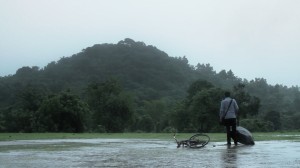 Rohit is more of a body actor. His body has to believe in what he is doing first, followed by his heart and then his mind. We went through many combinations of methods from Michael Chekov to Strasberg to some of our own. Most importantly, after internalising the pre-decided way to do any shot, he had to respond with equal alertness to the surroundings he was in. To be in present without acting is what he practiced during the shot-taking, to be precise. Before and after the shot, he used to go through a lot of conscious approaches towards acting.
Rohit is more of a body actor. His body has to believe in what he is doing first, followed by his heart and then his mind. We went through many combinations of methods from Michael Chekov to Strasberg to some of our own. Most importantly, after internalising the pre-decided way to do any shot, he had to respond with equal alertness to the surroundings he was in. To be in present without acting is what he practiced during the shot-taking, to be precise. Before and after the shot, he used to go through a lot of conscious approaches towards acting.
That brought some method into his madness.
I’m curious. What sort of reactions do you get from your friends and family when they watch your films? What about reactions at international festivals?
A. ‘You should be in an asylum’, ‘I am glad that you are not a serial killer’, are the general reactions I get from familiar people, because they are responding more to me than to the film. In International festivals, I have been told that I have a unique voice. Neither do I know what they mean nor do they, when they say it.
Irrespective of whether I understood the core of Kaul, it is a brave and uncompromising effort. Do you think you could get more fearful (or conventional) as you progress to your next films, now that you’ve understood your limits and strengths and weaknesses?
A. I am not thinking of being fearful or conventional in any sense. I think that is a waste of time, betrayal to cinema and to its audience as well. I am not sure what brave and uncompromising means either. I try to do what I feel, and to make it feasible production-wise. To know my limits, strengths and weaknesses, I have to know myself. The only obstacles to that are: I am not interested in knowing myself, and I keep changing as I respond to the rhythms of the evolving constant.
What would you like to achieve as a storyteller, down the years? Is there a particular kind of legacy that has inspired you?
Also, it can’t be easy to convince producers of your vision…
A. To explore storytelling as a physical experience as much as a psychological one. Nothing in particular and all in general has been inspiring me. I feel the spirit that drives us is that of those cave people who drew stuff on the walls. Why they did it; there is still no consensus amongst archaeologists about that. It triggered something that still exists, we know that. And probably, that is all that we need to be aware of.
All my short films were self-funded. For Kaul, I thankfully met a crazy person called Chin2 Singh. The way he felt, understood and supported the film is a miracle in itself. I wish to work with such people who are interested in pushing the envelope with discipline and madness, and at the same time, with equal intensity. My parents put some money to get the film started, and made it reach a stage for their fear of me going out of control. After that stage was reached, I knew I could show something to a potential producer who could finance the rest of it. I spoke to many people who support indie cinema or whatever it is called. Hardly anyone responded, perhaps because I am not much into networking and social interactions. Chin2 saw the work that was done, and he said, “No matter what, this film has to get the best resources it can”. He could, and the film got made.
Innovation of content and technology, knowing the difference between what the audience wants and what it needs, analysis of risk taking, organised creativity, search for talent without any ‘recommendation’ channel, nurturing audacious film artists etc. are few of the things which any producer/studio needs to have in order to capitalise his/her/its ambitions to the absolute optimum. There might be a few like that, but the quantity is disproportionate. However, this is the case with all fields in our society.
The true game-changing phenomenon is the Internet. A young audience is already drifting to the enormously diverse content on it. If our film industry does not find methods to make the theatrical movie experience unique again, it could be extremely difficult to get this audience back for a long time. This tectonic shift in audience-base will result in a lot of jumping-the-bandwagon desperate attempts. But that will only make the situation worse, unless a strategy of renovating the medium is figured out and implemented – soon.
Screening Schedule at Jio MAMI Mumbai Film Festival ’15:
1) Saturday, October 31st – 11.15am Screen 3, PVR ECX Andheri West
2) Monday, November 02nd – 09.00pm Screen 1, PVR Juhu
3) Tuesday, November 03rd – 04.30pm Screen 1, PVR Phoenix, Lower Parel

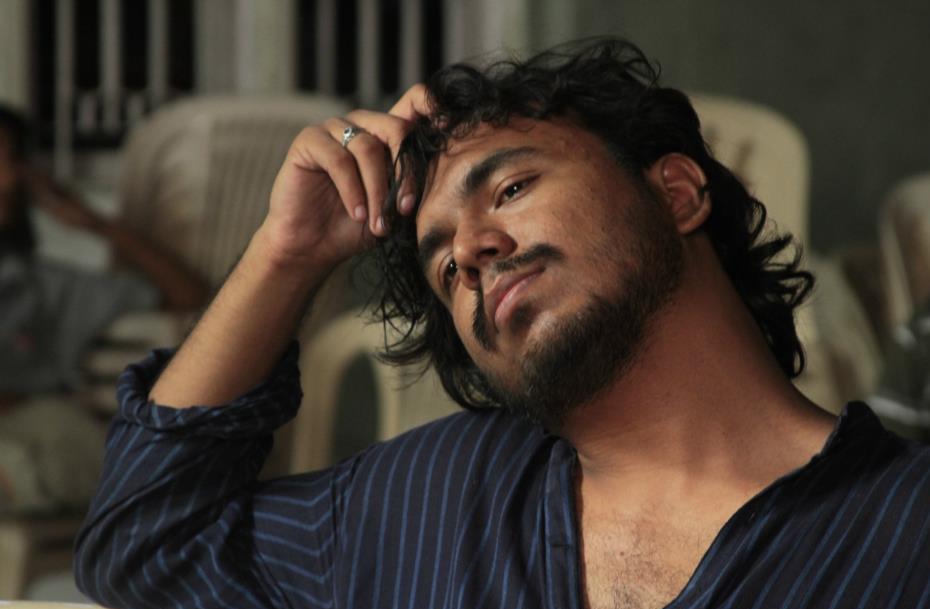
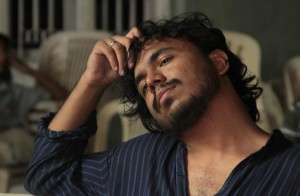


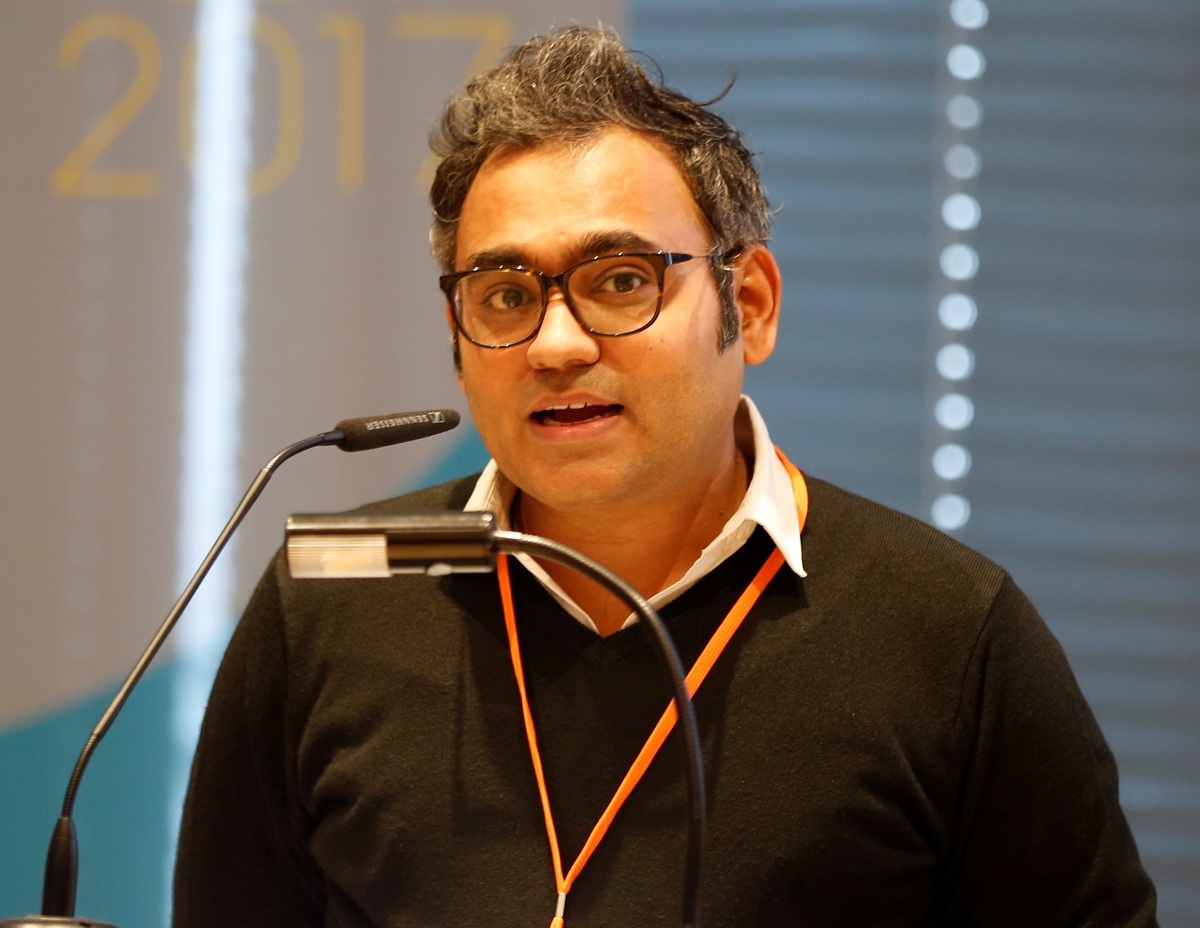
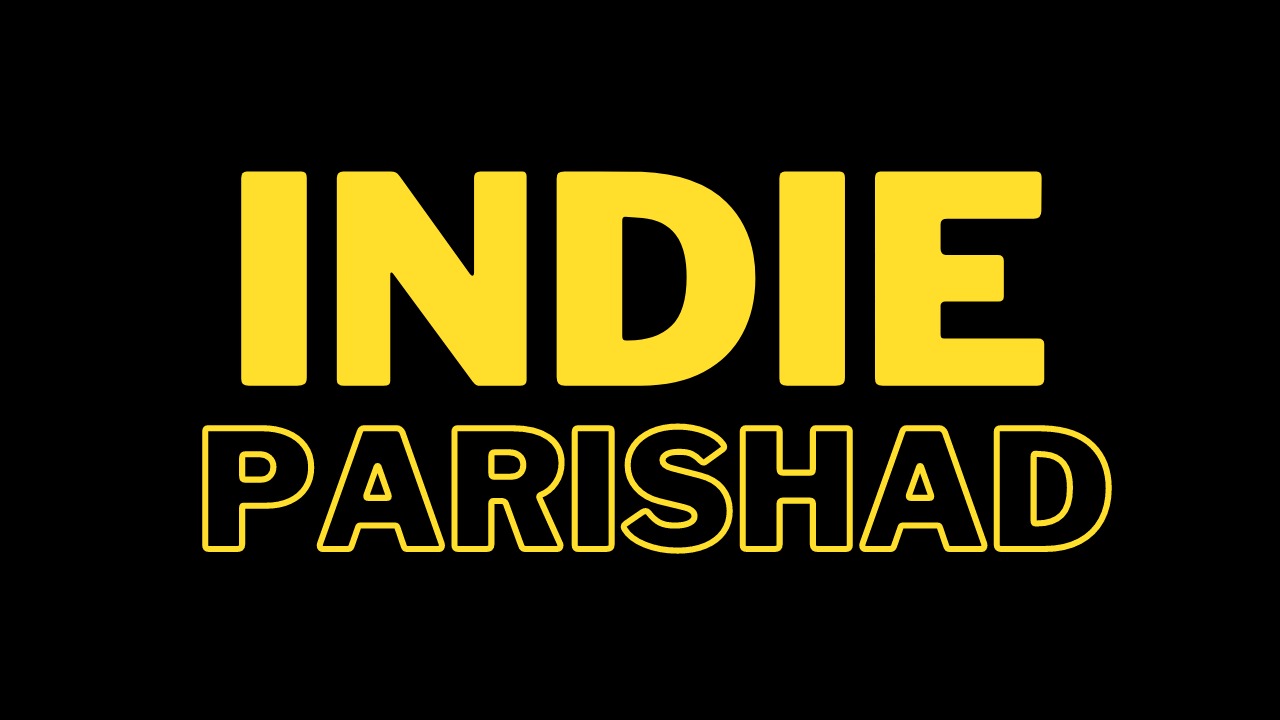
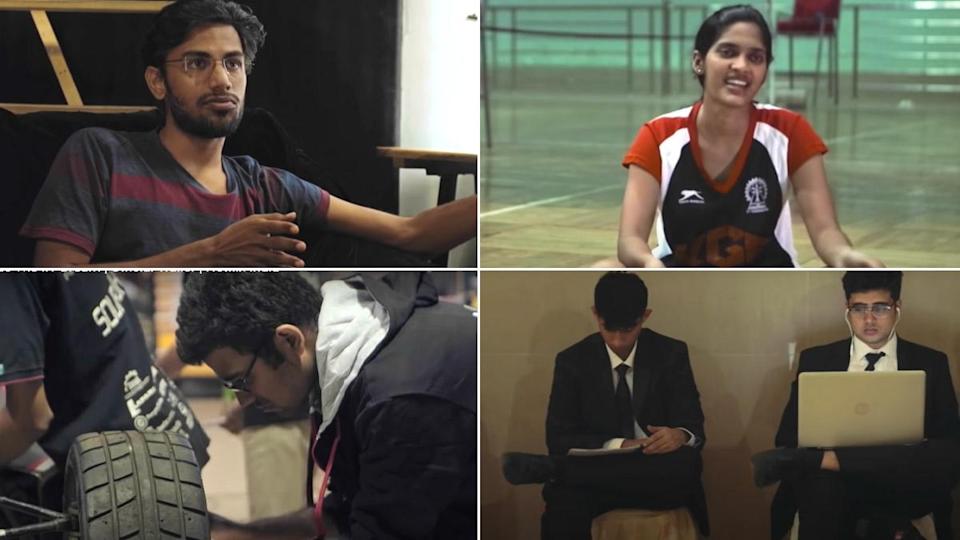


Leave A Comment
You must be logged in to post a comment.